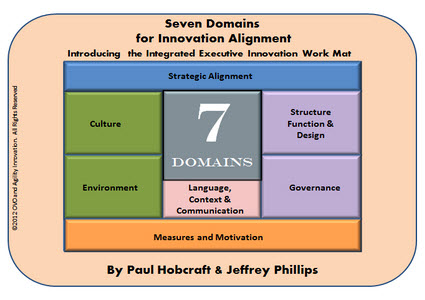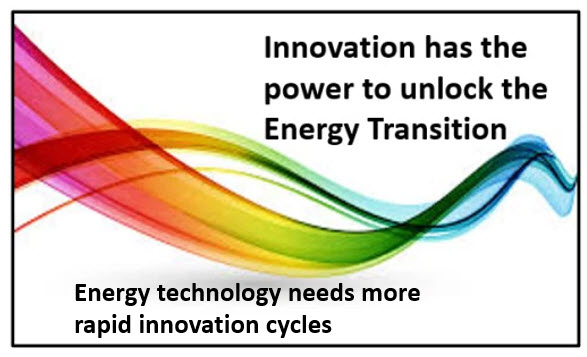I believe the value of working the seven domains of this framework, named the Leadership Alignment Workmat has significant value within and across any organization. It brings innovation together, a unifying point for the activity and momentum of innovation to become central to the core of the business in its future investment and value impact.
The Leadership Alignment Workmat provides a unique examination of the executive’s role in innovation; it offers a framework that the organisation’s leadership can adopt to ensure linkages and synergies between strategy and innovation, innovation and capabilities, innovation and culture.
They often lack the communicating medium to help clarify and shape the innovation story to provide the guidance necessary for achieving that essential engagement and encouragement they would like to align organizational efforts required from innovation to the strategies envisioned.
Benefits of applying the Leadership Alignment Work Mat
From an investment in an executive work mat exercise, you receive four significant benefits. Continue reading “Leadership Alignment Work Mat for making Innovation fully connected.”







 Ecosystems and Platforms are our pathways to a new innovation future. Ecosystems have suddenly become of age, as they can be formed around common concepts fairly rapidly, they can enable cross-cutting innovation to be delivered in highly collaborative ways. They can, through shared platforms achieve a closer relationship with the customer, to understand their needs and experience through increased collaboration, and engagement.
Ecosystems and Platforms are our pathways to a new innovation future. Ecosystems have suddenly become of age, as they can be formed around common concepts fairly rapidly, they can enable cross-cutting innovation to be delivered in highly collaborative ways. They can, through shared platforms achieve a closer relationship with the customer, to understand their needs and experience through increased collaboration, and engagement.

